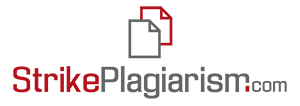Tear and serum levels of the neuromarker BDNF in type 2 diabetes mellitus patients with and without diabetic retinopathy
DOI:
https://doi.org/10.31288/oftalmolzh202361619Keywords:
diabetic retinopathy, BDNF, diabetic retinopathy biomarkers, retinaAbstract
Background: Numerous studies have been conducted to examine the growth factors capable of exerting simultaneous effects on the vascular and metabolic components of the pathogenesis of diabetic retinopathy (DR).
Purpose: To examine tear and serum brain-derived neurotrophic factor (BDNF) levels in type 2 diabetes mellitus (DM2) patients with and without DR.
Material and Methods: One hundred and seventy patients with DM2 and 84 practically healthy individuals without any eye disease (totally, 254 individuals and 504 eyes) were included in the study. Of the total individuals included in the study, 49.2% were males and 50.8% were females. The mean age plus or minus standard deviation was 67 ± 4.2 years for men and 64 ± 5.6 years for women.
Results: It was found that tear BDNF levels lower than 97.5 pg/ml and serum BDNF levels lower than 23.8 ng/ml indicate the transition to DR, whereas tear BDNF levels lower than 62.0 pg/ml and serum BDNF levels lower than 12.0 ng/ml indicate the development of proliferative DR.
Conclusion: Mean serum BDNF levels as low as below 23.8 ± 1.33 ng/ml and mean tear BDNF levels as low as below 97.5 ± 5.57 pg/ml are an early sign of DR.
References
Urmanova FM. [Prognostic value of neurotrophic and vascular growth factors in early diagnosis of diabetic retinopathy]. Stomatologiya. 2022; 4 (89):93-7. Russian.
Budzinskaya MV, Lipatov DV, Pavlov GV, Petrachkov DV. [Biomarkers of diabetic retinopathy]. Diabetes Mellitus. 2020;23 (1):88-94. Russian. https://doi.org/10.14341/DM10045
Van V. [Diabetic retinopathy: Pathophysiology and management]. Int J Mol Sci. 2018;19:1816. Russian. https://doi.org/10.3390/ijms19061816
Karakulova YuV, Filimonova TA. [Biomarkers of the development and progression of diabetic polyneuropathy]. Zhurnal nevrologii i psikhiatrii. 2020;120(8):70-5. Russian. https://doi.org/10.17116/jnevro202012008170
Afarid M, Namvar E, Sanie-Jahromi F. Diabetic Retinopathy and BDNF: A Review on Its Molecular Basis and Clinical Applications. J. Ophthalmol. 2020 May 18:2020:1602739. https://doi.org/10.1155/2020/1602739
Popova NK, Ilchibaeva TV, Naumenko VS. [Neurotrophic factors (BDNF,GDNF) and the serotonergic system of the brain]. Biochemistry (Mosc). 2017 Mar;82(3):308-317. https://doi.org/10.1134/S0006297917030099
Pusparajah P, Lee LH, Kadir KA. Molecular markers of diabetic retinopathy: potential screening tool of the future? Front Physiol. 2016 Jun 1;7:200. https://doi.org/10.3389/fphys.2016.00200
Ang WJ, Zunaina E, Norfadzillah AJ, Raja-Norliza RO, Julieana M, Ab-Hamid SA, et al. Evaluation of vascular endothelial growth factor levels in tears and serum among diabetic patients. PLoS One. 2019;14(8):e0221481. https://doi.org/10.1371/journal.pone.0221481
Bakhritdinova FA, Urmanova FM, Kangilbayeva GE, Urmanova UM. Prognostic Criteria for the Diagnosis and Progression of Diabetic Retinopathy. Acta Scientific Ophthalmology. 2023 March; 6(3):3-6.
Bakhritdinova FA, Urmanova FM, Kangilbaeva GE. Correlation of biomarkers of diagnosis of diabetic retinopathy. In: Proceedings of the 24th European Congress of Endocrinology. 21-24 May 2022, Milan, Italy. p. 56. https://doi.org/10.1530/endoabs.81.P56
Vujosevic S, Simó R. Local and Systemic Inflammatory Biomarkers of Diabetic Retinopathy: An Integrative Approach. Invest Ophthalmol Vis Sci. 2017 May 1;58(6):BIO68-BIO75. https://doi.org/10.1167/iovs.17-21769
Zhou Z, Ju H, Sun M, Chen H. Serum Vascular Endothelial Growth Factor Levels Correlate with Severity of Retinopathy in Diabetic Patients: A Systematic Review and Meta-Analysis. Dis Markers. 2019 Mar 24:2019:9401628. https://doi.org/10.1155/2019/9401628
Bakhritdinova FA, Kangilbaeva GE, Nabieva IF, Jurabekova AZ. Prediction of the progression of diabetic retinopathy based on hemodynamic data. J Ophthalmol (Ukraine). 2021;4:26-31. https://doi.org/10.31288/oftalmolzh202142631
Kangilbaeva G, Bakhritdinova F, Urmanova F. Assessing the Dynamics of Antioxidant Protection of Tear Fluid and Retrobulbar Blood Circulation in Diabetic Retinopathy. New Horizons in Medicine and Medical Research. 2022;(4):83-90. https://doi.org/10.9734/bpi/nhmmr/v4/2000B
Downloads
Published
How to Cite
Issue
Section
License
Copyright (c) 2023 Bakhritdinova F.A., Kangilbaeva G.E., Urmanova F.M., Mirrakhimova S.S., Nabieva I.F.

This work is licensed under a Creative Commons Attribution 4.0 International License.
This work is licensed under a Creative Commons Attribution 4.0 International (CC BY 4.0) that allows users to read, download, copy, distribute, print, search, or link to the full texts of the articles, or use them for any other lawful purpose, without asking prior permission from the publisher or the author as long as they cite the source.
COPYRIGHT NOTICE
Authors who publish in this journal agree to the following terms:
- Authors hold copyright immediately after publication of their works and retain publishing rights without any restrictions.
- The copyright commencement date complies the publication date of the issue, where the article is included in.
DEPOSIT POLICY
- Authors are permitted and encouraged to post their work online (e.g., in institutional repositories or on their website) during the editorial process, as it can lead to productive exchanges, as well as earlier and greater citation of published work.
- Authors are able to enter into separate, additional contractual arrangements for the non-exclusive distribution of the journal's published version of the work with an acknowledgement of its initial publication in this journal.
- Post-print (post-refereeing manuscript version) and publisher's PDF-version self-archiving is allowed.
- Archiving the pre-print (pre-refereeing manuscript version) not allowed.












